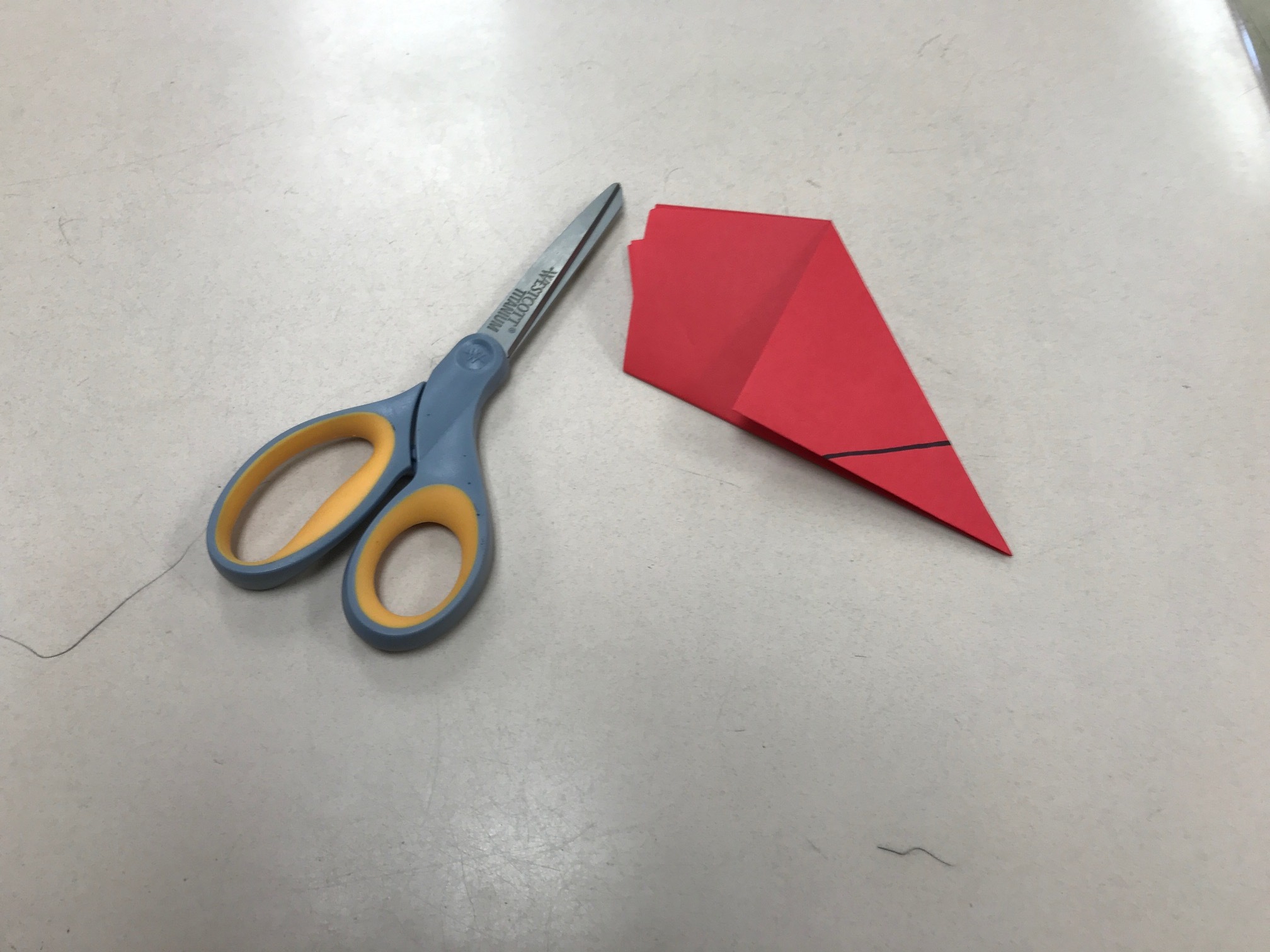The Fold-and-Cut Challenge
Players: 1 or more
Ages: 4 and up
Cost: Free!
Math Ideas: Symmetry, visualization, lines and angles
Questions to Ask:
How could you cut out this shape?
If I cut this shape out of a folded piece of paper and unfold it, what will the shape look like?
What would this shape look like if you folded it in half? What if you folded it in half twice?
When parents think about math, they tend to focus on numbers and operations. But there are so many other important aspects of mathematical thinking that need your attention as well. Geometric reasoning, spatial visualization, pattern recognition, sorting by attributes.
Fortunately, many of these domains of math are extremely fun to play with! Take today's game for example: The Fold-and-Cut Challenge!
This is actually a pair of games, one for young kids and one for upper-elementary and older. In either case, your kids will do some fantastic spatial reasoning.
How to Play - Younger Kids
For kids ages 4-7, I take a piece of paper and fold it in half. Then I draw a curvy line along the folded edge of the paper and cut it out, unfolding it to show the kids what the shape looks like.
Then I give the kids a series of challenges: can you fold a piece of paper in half and then cut out the following shapes?
Rectangle
Square
Circle
Heart
Triangle
Star
Plus sign
The letter H
The letter X
The letter M
A person
And so on. I like to keep a copy of each shape so my kids can see how they've progressed to more and more complicated shapes.
The triangle in particular is tricky because the kids keep cutting triangles out of the paper, only to unfold them to find diamonds, kites, and all sorts of shapes that have more than three sides. Once they discover the trick for triangles (and don't you dare show them!) they can make all sorts of different shapes from folded paper.
How to Play - Older Kids
Once your kids feel comfortable with the simpler activity, you can give them this fun extension: Can you take a piece of paper and fold it so that with a single, straight cut you can cut a square out from the middle of the paper?
It seems like quite a challenge, so I urge you to grab some nearby scissors and paper and give it a try yourself. If you want a demonstration, you can watch the first couple of minutes of this delightful Numberphile video.
Once I've shown anyone that video, they usually want to try out the challenge themselves. That's when I give them these handouts with increasingly difficult shapes to fold and cut out (Credit to Joel David Hamkins). I guarantee that all the shapes are possible to cut out with a single straight cut, but they are not easy! Try them out yourself and see how your own math brain gets a workout.
I love playing these sorts of games with my kids because, unlike with Chutes and Ladders, I can keep myself entertained by the math as well. How do you cut out a star with a single cut? What about a letter T? My kids and I are solving different problems, but we are playing in the same space and can share our ideas as we work alongside each other.
Where's the Math?
The fold-and-cut challenge gets your kids thinking about symmetry, congruence, angle relationships, all in the context of cutting a shape out of a piece of paper.
Although the shapes start out pretty simply, they quickly become a challenge, even to adults. As it turns out, the math behind the fold-and-cut challenge is pretty complicated! A few mathematicians have even proven that every shape made of straight edges can be folded and cut out with a single straight cut. It takes quite a lot of folding to get a turtle, but it's mathematically possible.
Questions to Ask
One of my favorite questions for younger kids is "what shapes are impossible to cut out from a folded sheet of paper?" This gets a great conversation started about symmetry and what sorts of shapes do and do not "match" themselves.
When my own kids were struggling to visualize and cut out a shape, I liked to ask them “What does a circle look like when it’s folded?” Once they could imagine a folded circle, they could cut it out more easily.
I like any question that gets kids visualizing the answer and then working backwards to find the path forward. This skill of working backwards is a valuable tool in any mathematician's toolkit, and we use it almost daily in Algebra.
When I did the fold-and-cut challenge in my math class, my students inevitably would get frustrated with the challenge when they kept cutting out the wrong shape. So to let off steam, I'd encourage them to fold the paper as many times and in as many ways as they wanted, and then to cut a single straight cut across the page. They came up with some hilarious and delightful shapes, entirely accidentally, and it kept them exploring in a less structured, but still enjoyable way.







